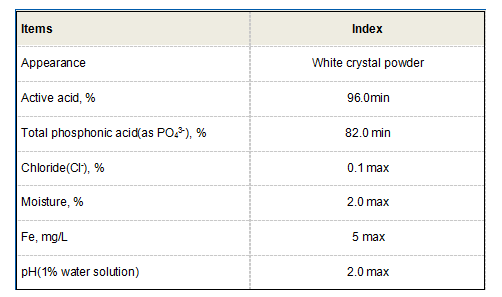Examples and Applications of Polycarboxylic Acids in Various Industries
Exploring Polycarboxylic Acids Definitions, Examples, and Applications
Polycarboxylic acids are a fascinating group of organic compounds characterized by the presence of multiple carboxyl (-COOH) functional groups within their molecular structure. These acids play critical roles in various chemical processes and have significant implications across diverse fields including agriculture, food science, and pharmaceuticals. This article aims to explore the nature of polycarboxylic acids, provide examples, and highlight their applications.
Understanding Polycarboxylic Acids
A polycarboxylic acid is defined as an organic acid that contains two or more carboxylic acid groups. These acids can be linear, branched, or cyclic in structure, showcasing a variety of physical and chemical properties. The presence of multiple carboxyl groups allows for increased acidity and reactivity, making polycarboxylic acids valuable in both synthetic and industrial processes.
Common Examples of Polycarboxylic Acids
Several notable polycarboxylic acids are frequently encountered in both nature and industrial applications. Here are some prominent examples
1. Citric Acid Perhaps the most well-known polycarboxylic acid, citric acid contains three carboxyl groups and is naturally found in citrus fruits. It serves a dual purpose as an acidulant in food and a key component in the Krebs cycle, crucial for cellular metabolism in living organisms.
2. Malic Acid With two carboxyl groups, malic acid is found in apples and other fruits, contributing to their tartness. It is widely used in the food industry as a flavoring agent and preservative, and is also involved in metabolic pathways.
3. Tartaric Acid This naturally occurring acid contains two carboxyl groups and is commonly associated with grapes and other fruits. It plays a significant role in winemaking and is also used in baking as a stabilizing agent for whipped egg whites.
4. Succinic Acid Featuring two carboxyl groups, succinic acid is a byproduct of metabolic processes and is used in the production of various chemicals, plastics, and pharmaceuticals.
5. Phthalic Acid This aromatic polycarboxylic acid has two carboxyl groups and is primarily used in the manufacturing of plasticizers, particularly diethyl phthalate, which imparts flexibility and durability to plastics.
polycarboxylic acid examples

6. Polyacrylic Acid A synthetic polycarboxylic acid, polyacrylic acid is known for its superabsorbent properties. It is widely utilized in personal care products, such as diapers, and in industrial applications for thickening agents and dispersants.
Applications of Polycarboxylic Acids
The versatility of polycarboxylic acids lends them to a wide range of applications across numerous industries
- Agriculture Polycarboxylic acids, such as humic acid, are employed in fertilizers to enhance nutrient uptake and soil health.
- Food Industry Citric acid and malic acid are extensively used as natural preservatives and flavor enhancers, ensuring food quality and safety.
- Pharmaceuticals These acids can act as intermediates in drug synthesis and have been investigated for their potential therapeutic properties.
- Textiles and Coatings Polycarboxylic acids can be used as crosslinking agents in resins, improving durability and performance in coatings and textiles.
- Cosmetics and Personal Care Compounds like polyacrylic acid are prevalent in lotions and creams for their ability to provide moisture and skin protection.
Conclusion
Polycarboxylic acids represent a diverse and important category of compounds in both natural and synthetic chemistry. From their crucial roles in metabolic processes to their widespread applications in various industries, these acids are essential to numerous facets of modern life. As research continues to unveil their potential, the significance of polycarboxylic acids will undoubtedly expand, paving the way for innovative products and solutions in the future.
-
The Ultimate Guide to Flocculants: Transforming Water TreatmentNewsNov.01,2024
-
Improve Your Water Treatment Solutions with PolyacrylamideNewsNov.01,2024
-
Enhance Your Water TreatmentNewsNov.01,2024
-
Empower You to Achieve the Highest Standards of Water QualityNewsNov.01,2024
-
Effective Scale InhibitorsNewsNov.01,2024
-
Discover the Power of Poly Aluminum Chloride in Water TreatmentNewsNov.01,2024





